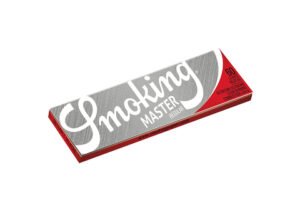Wow—let’s cut to the chase: casinos turn a predictable edge into steady revenue by combining game math, player behaviour, and smart product design.
This paragraph outlines the core idea that underpins casino profits so you can spot where risk is concentrated and why small percentages add up to big dollar amounts, leading us straight into the mechanics that drive those margins.
Hold on—here’s a practical rule you can use immediately: multiply bet volume by house edge to estimate theoretical revenue, then adjust for volatility to get expected short-term ranges.
That formula gives you a quick sanity check when you compare offers, and it leads nicely into a detailed look at RTP, volatility, and turnover mechanics next.

How Casinos Make Money: The Core Mechanics
Something’s obvious: every casino product has an in-built margin, usually expressed as house edge or the inverse RTP, and that sits at the heart of profitability.
We’ll unpack RTP, house edge, volatility, and turnover so you can see how each factor affects long-term and short-term outcomes, which ties directly to why some games consistently pay out less than others over time.
Quick observation: Return-to-player (RTP) is the long-run average percentage returned to players, not a promise for any single session.
Because RTP is a statistical expectation measured over millions of spins, it funnels into the casino’s cash flow model and explains why a 2–5% edge can still be extremely profitable when multiplied by many bets, and that understanding prepares us to compare various game types.
RTP, Volatility and Turnover — The Triad of Casino Economics
My gut says players glance at RTP and stop, but volatility and turnover matter far more to short-term outcomes and operator revenue.
RTP tells you long-term fairness; volatility shows hit frequency and variance; turnover (total bets placed) multiplies those into actual revenue, so we need to look at their interplay in practice next.
At first I thought volatility was just “how wild a slot is,” but then I saw how low-volatility games can actually increase turnover by keeping players betting longer.
This behavioral effect means casinos design portfolios with both high-variance jackpots to attract attention and low-variance staples to maintain steady betting, which explains the mixed product strategy they use across sites.
Comparison: How Different Games Generate Revenue
| Game Type | Typical House Edge / RTP | Primary Profit Driver | Player Behaviour Notes |
|---|---|---|---|
| Online Slots (pokies) | RTP ~92–97% | High turnover + wide variance + in-game events | Frequent micro-bets, session length drives turnover |
| Roulette (classic) | House edge 2.7% (EU) / 5.26% (US) | Low variance per bet but high bet amounts | Easy to scale stakes; wins/losses are clear and fast |
| Roulette Lightning / Fast variants | Similar base edge + extra multipliers (varies) | Increased excitement → more rounds per hour | Shorter rounds increase turnover and impulse plays |
| Blackjack | House edge ~0.5–2% (strategy dependent) | Skill reduces edge; side bets raise margins | Experienced players reduce volatility; side bets profitable |
| Live Dealer Games | Varies; often similar to RNG versions | Perceived fairness + social engagement | Higher engagement keeps players longer despite similar math |
Notice the pattern: whether it’s a slot or a lightning roulette table, the casino’s revenue is turnover multiplied by the effective edge, and design choices tweak both variables.
This observation brings us to a closer look at modern “fast” casino products and the specific changes they introduce to that equation.
Roulette Lightning: A Revolution—or Just Faster Rounds?
That bonus-style multiplier you see on Lightning Roulette sounds sexy, but it’s important to parse two separate effects: perceived player value and effective house take.
We’ll walk through how Lightning-style multipliers change session dynamics and why operators favour them for lifting hourly turnover without necessarily increasing theoretical unfairness.
Hold on—Lightning Roulette adds random multipliers on straight-up numbers, which raises volatility for winners and increases excitement for observers, and that excitement often converts viewers into bettors.
Because rounds are quicker and the social buzz is higher, casinos see more bets per hour, which raises expected revenue even if RTP on average stays similar to classic formats; next I’ll show a short numeric example to make that concrete.
Mini Case: How a Fast Variant Boosts Revenue (Hypothetical)
Quick example: imagine a classic roulette table handles 100 bets/hour with average stake $10 and house edge 2.7%—theoretical revenue per hour is 100×10×0.027 = $27.
Now switch to a Lightning-style table that runs 160 bets/hour (faster rounds, higher impulse betting) with the same average stake and similar effective edge—theoretical revenue jumps to 160×10×0.027 = $43.20 despite no change in edge, which highlights the power of turnover increases.
That simple calculation makes it clear: operators often pursue format changes that increase rounds per hour and session stickiness because small behavioural shifts scale dramatically.
With that in mind, promotions and bonus mechanics play a second-order but crucial role in nudging turnover, which I’ll cover in the section about offers and wagering math.
Bonuses, Wagering Requirements and the Real Value
Here’s the thing: welcome packages and free spins are marketing funnels designed to boost initial turnover while letting the house protect value through wagering requirements and game weightings.
A 50× wagering requirement on bonus funds effectively ties a player into a large amount of turnover before they can cash out, so understanding the math is essential for judging a bonus’s true value, which is where a well-timed play strategy can help.
For a concrete play: a $100 bonus with a 50× WR implies $5,000 turnover required; if you play slots at $1 average bet and average RTP 96%, the expected loss from that turnover is roughly $5,000×(1−0.96)= $200 in house margin, so the bonus must be judged against this burn rate.
If you want to test live and bonus combos for yourself, consider responsibly checking current offers before committing bankroll, and if you want a quick access point, see an operator’s promotions—one such link is available for reference here: get bonus—which leads naturally into best-practice checks when chasing offers.
Quick Checklist: What To Check Before You Play Anything New
Short list—read it before you deposit:
- RTP / house edge of target games and where bonus play counts toward wagering
- Wagering requirements and any time limits attached to bonuses
- Deposit/withdrawal fees and verification (KYC) rules
- Session limits, self-exclusion options, and responsible gaming resources
- Game weighting: which games count 100% toward wagering and which are excluded
Each bullet tells you what to verify before committing and together they prevent common surprises, which I’ll address next in a short mistakes list that many players repeat.
Common Mistakes and How to Avoid Them
My gut: most players misunderstand wagering arithmetic or chase big bonuses blindly, and that’s where the money leaks.
Below are the frequent errors and practical fixes so you can keep more control.
- Misreading WR: players forget to include deposit when WR applies to D+B; fix: always compute turnover using (D+B) when required.
- Ignoring game weightings: table games often contribute less or nothing; fix: confine bonus play to qualifying slots unless stated.
- Chasing variance with larger bets: bigger bets inflate variance and burn through bankroll; fix: use consistent bet sizing to manage WR.
- Skipping KYC: unfinished verification delays withdrawals; fix: upload ID documents early.
- Overlooking withdrawal caps and fees: these reduce net wins; fix: check cashout rules and choose crypto or e-wallets if cheaper.
Fixing these routine mistakes is straightforward and will improve how you treat bonuses and fast-variant games, which is essential if you want to apply the practical tips that follow.
Two Short Examples From Practice
Example A: You accept a 100% match up to $200 with 30× WR on D+B—deposit $100 and you need to wager $6,000 total before withdrawal; split your play across 0.20–1.00 bets to preserve session life; these bet sizes translate to longer play and a better chance of clearing the rollover without hitting variance spikes.
This calculation shows how bet sizing and bankroll targets affect your ability to meet WR without destroying your bankroll, and the next example highlights roulette-specific dynamics.
Example B: On Lightning Roulette, because rounds are quicker you can hit more bets per hour; cap bets per round and set a session time limit—say 30 minutes—so you don’t let the faster pace blow your pre-set loss threshold, which brings us to safer-play rules.
Practical safeguards like a session timer and deposit limits will reduce impulsive scaling, keeping your play within planned parameters and helping you avoid both financial and emotional tilt.
Mini-FAQ
Q: Does Lightning Roulette change the house edge?
A: Typically the base house edge remains similar, but added features (multipliers) and faster rounds affect practical turnover and variance, so expected hourly revenue for the operator may rise even if theoretical edge stays comparable, which is why tracking rounds/hour matters.
Q: How do wagering requirements change game choice?
A: Wagering requirements often weight games so that slots count 100% while many table games count 0–10%, making slots the rational choice for clearing WR; always check the terms to avoid wasted effort, and remember time limits can eliminate leftover bonus value.
Q: Are faster games like Lightning riskier for players?
A: They raise the pace and short-term variance which can amplify both wins and losses; set bet-size rules and session caps to mitigate speed-driven losses and maintain discipline when rounds accelerate.
These succinct answers should guide your immediate decisions and lead you to create a personal play plan that balances fun and risk, which I summarise in the final responsible-gaming note and a safe suggestion below.
If you’re checking promotions while staying responsible, remember to compare the true cost of a bonus to the implied house margin during the required turnover and apply strict bankroll rules before you accept any offer—if you want to see an example operator’s promotions page for context, you can take a look here: get bonus—but always keep limits in place and don’t treat bonuses as a shortcut to profit.
This practical caveat leads directly into the final safety checklist and author notes so you leave with usable next steps.
18+ only. Gambling can be addictive—if you feel your play is becoming a problem, seek help. Use deposit limits, cooling-off periods and self-exclusion where needed, and if you are in Australia check local resources such as Gambling Help Online for support.
This final safety reminder links what you’ve read to immediate protective actions so you play smarter, not harder.
About the Author
Experienced iGaming analyst and casual player based in Australia, with hands-on experience in bonus maths, operator product strategies, and player behaviour testing; writes practical, no-nonsense guides for people who want to understand how online casinos generate profit and how to make safer play choices.
My stance is pragmatic: know the math, limit your exposure, and enjoy responsibly.
Sources
Calculations and comparisons in this article are illustrative and based on standard RTP/house edge mechanics and observed product designs in modern online casinos. No external links were used beyond the referenced operator link above to keep focus on actionable math and behavior-driven insights.
For official assistance, consult your local gambling support services or the casino’s published terms and conditions before playing.

















